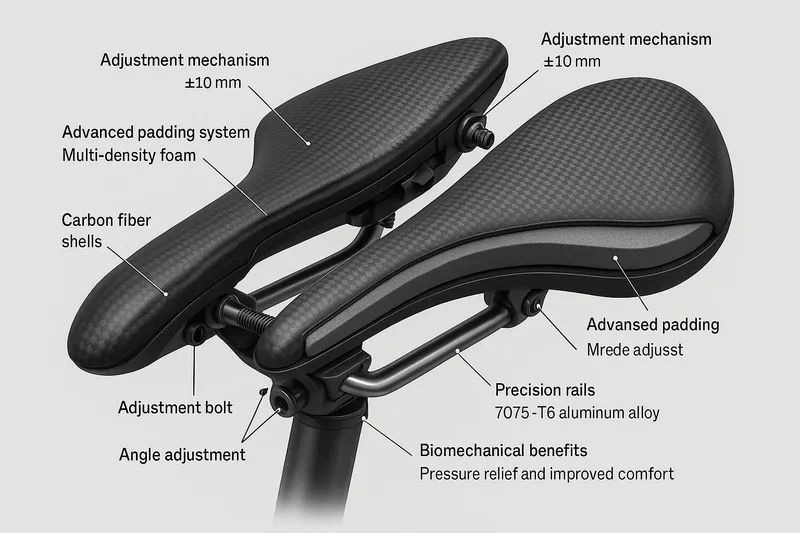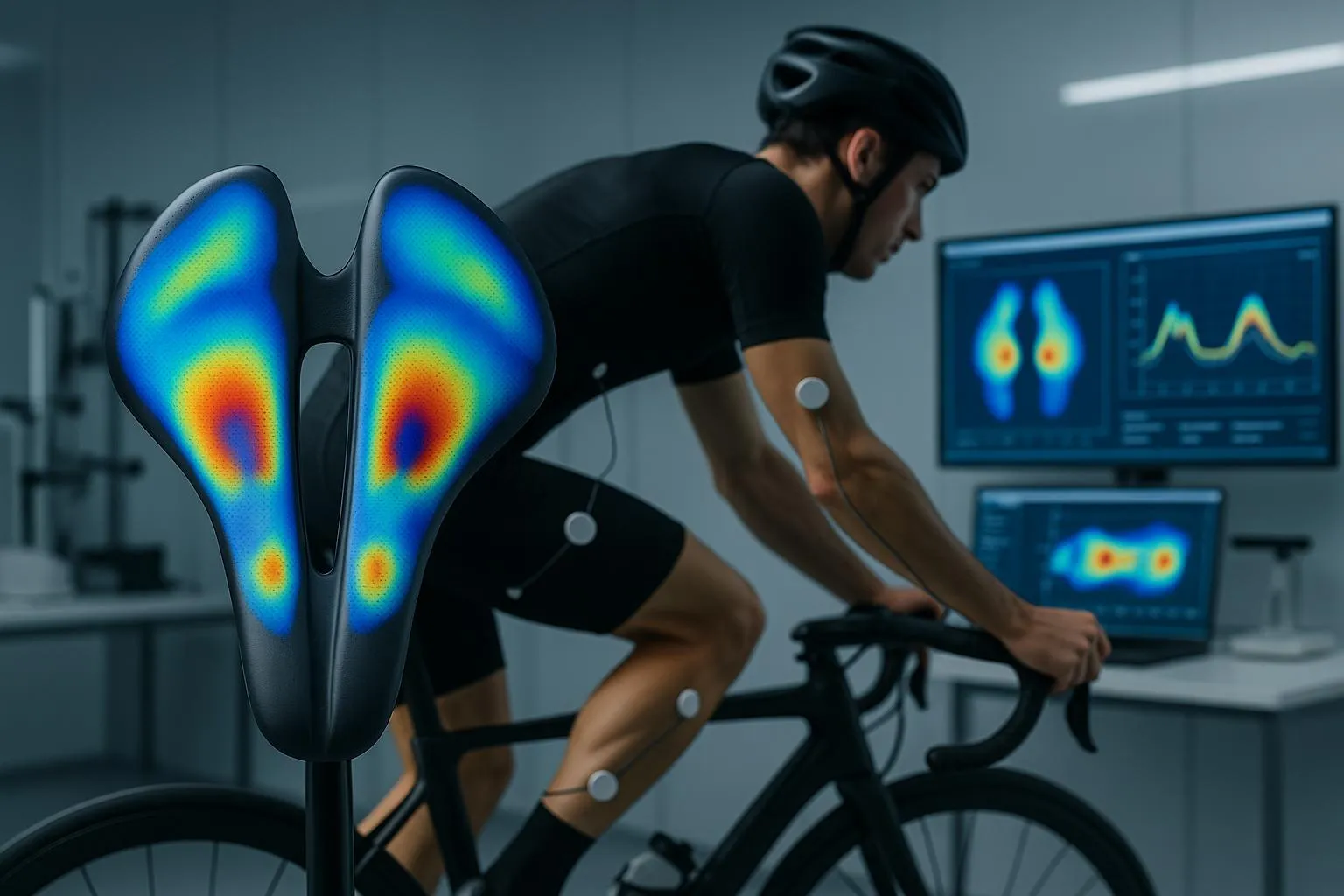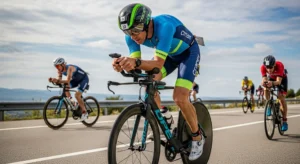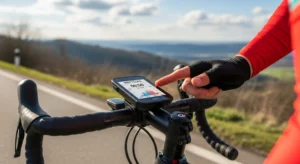The cycling world is experiencing a profound revolution in saddle technology that promises to fundamentally transform one of the most persistent challenges in cycling: achieving optimal comfort and performance while maintaining proper biomechanical positioning. This revolution, driven by advances in pressure mapping technology, materials science, and biomechanical understanding, represents the most significant advancement in cycling comfort since the introduction of modern saddle padding systems. The year 2025 has emerged as a watershed moment for saddle innovation, with breakthrough technologies finally providing solutions to comfort problems that have plagued cyclists for generations.
The significance of this biomechanical revolution extends far beyond simple comfort improvements to encompass fundamental changes in how cyclists can maintain optimal positioning, sustain power output, and enjoy extended riding without the discomfort and health concerns that have traditionally limited cycling participation and performance. The integration of scientific pressure mapping analysis with innovative split saddle designs is creating unprecedented opportunities for customization and optimization that address the individual anatomical variations that make saddle selection such a personal and often frustrating challenge for cyclists of all levels.
The convergence of advanced materials engineering, sophisticated pressure measurement technology, and deeper understanding of human biomechanics has created the foundation for saddle designs that can adapt to individual anatomy rather than forcing riders to adapt to fixed saddle shapes. This represents a fundamental shift from the one-size-fits-all approach that has dominated saddle design for decades to a new paradigm of personalized comfort that recognizes and accommodates the significant anatomical variations that exist among cyclists. The implications of this transformation extend throughout the cycling experience, from recreational riding to professional competition.
The scientific validation of split saddle technology through pressure mapping studies has provided compelling evidence that these innovative designs can deliver substantial improvements in comfort and performance while addressing health concerns that have limited cycling participation among certain populations. Research demonstrating up to 61% reduction in perineal pressure compared to traditional saddle designs provides quantitative validation of the benefits that many cyclists have experienced subjectively, creating confidence in the effectiveness of these new technologies while establishing scientific foundations for continued innovation.
The Science of Pressure Mapping and Biomechanical Analysis
The development of sophisticated pressure mapping technology has revolutionized the scientific understanding of how cyclists interact with their saddles, providing unprecedented insights into pressure distribution patterns, contact forces, and biomechanical relationships that were previously impossible to measure accurately. This technology utilizes arrays of hundreds of pressure sensors to create detailed maps of pressure distribution across the saddle-rider interface, revealing precise information about where pressure occurs, how much force is applied, and how these patterns change with different riding positions, saddle designs, and individual anatomical characteristics.
The gebioMized pressure mapping system, which has become the gold standard for saddle pressure analysis, employs sophisticated sensor arrays that can measure pressure distribution with remarkable precision and temporal resolution. These systems can capture pressure data at rates exceeding 100 measurements per second, enabling detailed analysis of how pressure patterns change during different phases of the pedaling cycle, various riding positions, and different terrain conditions. The high resolution and accuracy of modern pressure mapping systems have revealed complex pressure distribution patterns that were previously unknown, providing the scientific foundation for developing more effective saddle designs.
The biomechanical implications of pressure mapping data extend far beyond simple comfort considerations to encompass fundamental aspects of cycling performance, including power transfer efficiency, aerodynamic positioning, and long-term health outcomes. Excessive pressure in sensitive anatomical areas can compromise blood flow, nerve function, and tissue health, leading to numbness, discomfort, and potential long-term health issues that can significantly impact cycling participation and enjoyment. The ability to quantify these pressure patterns precisely has enabled the development of saddle designs that can minimize problematic pressure while maintaining the support and stability required for effective cycling performance.
The relationship between pressure distribution and cycling efficiency has emerged as a critical factor in saddle design, with research demonstrating that optimal pressure distribution can improve power transfer while reducing energy expenditure and fatigue. Pressure mapping studies have revealed that traditional saddle designs often create pressure hotspots that can interfere with optimal muscle function and blood flow, leading to reduced efficiency and increased fatigue during extended riding. The development of saddle designs that distribute pressure more evenly across appropriate anatomical structures can improve cycling efficiency while enhancing comfort and reducing health risks.
The individual variability in pressure distribution patterns has highlighted the importance of personalized saddle selection and fitting, with pressure mapping studies revealing significant differences in optimal saddle characteristics among different riders. Factors including pelvic anatomy, riding position, flexibility, and riding style all influence optimal pressure distribution patterns, making personalized saddle selection essential for achieving optimal comfort and performance. The development of pressure mapping protocols that can quickly and accurately assess individual pressure distribution patterns is enabling more effective saddle selection and customization processes.
The temporal aspects of pressure distribution during cycling have revealed important insights into how pressure patterns change throughout extended rides, with implications for saddle design and rider positioning strategies. Pressure mapping studies have shown that pressure distribution patterns can change significantly as riders fatigue, adjust their position, or encounter different terrain conditions, highlighting the importance of saddle designs that can accommodate these dynamic changes while maintaining optimal support and comfort throughout extended riding sessions.

Split Saddle Technology and Design Innovation
The development of split saddle technology represents a fundamental departure from traditional saddle design philosophy, moving from unified structures that attempt to accommodate all riders to modular systems that can be customized to individual anatomical requirements and riding preferences. This innovation addresses one of the most persistent challenges in cycling comfort by eliminating the nose pressure that has been a source of discomfort and health concerns for many cyclists while providing the stability and support required for effective cycling performance. The evolution of split saddle designs has progressed from simple nose cutouts to sophisticated fully adjustable systems that can be precisely configured for individual riders.
The biomechanical principles underlying split saddle design focus on redirecting pressure from sensitive soft tissue areas to skeletal structures that are better equipped to handle load-bearing forces. Traditional saddle designs often concentrate pressure on the perineum, a soft tissue area containing important blood vessels and nerves that can be compromised by excessive pressure during cycling. Split saddle designs eliminate or significantly reduce perineal pressure by creating space in this critical area while redistributing support forces to the ischial tuberosities (sit bones) and other skeletal structures that can handle pressure more effectively without compromising circulation or nerve function.
The engineering challenges associated with split saddle design include maintaining structural integrity while providing adjustability, ensuring adequate support distribution across separated components, and creating reliable adjustment mechanisms that can withstand the forces and environmental conditions encountered during cycling. Advanced materials including high-strength aluminum alloys, carbon fiber composites, and precision-engineered polymers are being utilized to create split saddle systems that combine lightweight construction with exceptional durability and adjustability. The development of sophisticated rail systems and adjustment mechanisms has enabled precise positioning of saddle components while maintaining the structural integrity required for high-performance cycling applications.
The adjustability features of modern split saddle systems enable customization of width, angle, height, and fore-aft positioning for each saddle half independently, providing unprecedented flexibility in achieving optimal fit and comfort for individual riders. This level of adjustability addresses the significant anatomical variations that exist among cyclists while enabling fine-tuning adjustments that can optimize comfort and performance for specific riding conditions or preferences. The precision of modern adjustment systems enables micro-adjustments that can make significant differences in comfort and performance while maintaining reliable positioning under the dynamic forces encountered during cycling.
The materials science innovations that enable advanced split saddle designs include the development of multi-density foam systems, advanced padding materials, and sophisticated covering materials that provide optimal comfort while maintaining durability and weather resistance. Modern split saddles often incorporate multiple foam densities within each saddle half, providing firm support in areas that require load-bearing capability while offering softer cushioning in areas where comfort is the primary concern. The development of advanced synthetic materials and specialized textiles has enabled the creation of saddle coverings that minimize friction while providing weather resistance and long-term durability.
The integration of split saddle technology with modern bicycle design requires careful consideration of compatibility with different frame geometries, riding positions, and component systems. The unique characteristics of split saddle designs can influence optimal positioning relative to the bottom bracket, handlebars, and pedals, requiring integrated approach to bicycle fitting that considers the interactions between saddle design and overall bicycle geometry. The development of fitting protocols specifically designed for split saddle systems is enabling more effective integration of these innovative designs with modern bicycle configurations.
Professional Adoption and Performance Validation
The adoption of split saddle technology by professional cyclists and competitive athletes has provided compelling real-world validation of the performance benefits and practical advantages of these innovative designs. Professional cycling, where marginal gains in comfort and efficiency can determine competitive outcomes, has served as a proving ground for split saddle technology while demonstrating that these designs can meet the demanding requirements of elite-level competition. The success of professional athletes using split saddle systems has helped overcome initial skepticism about these unconventional designs while providing credible endorsement of their effectiveness.
The time trial and triathlon disciplines have been particularly receptive to split saddle technology due to the aggressive riding positions and extended durations that characterize these events. The aerodynamic positioning required for time trial and triathlon competition often exacerbates pressure-related comfort issues, making the pressure relief provided by split saddle designs particularly valuable for maintaining optimal positioning throughout extended efforts. Professional time trialists and triathletes have reported significant improvements in comfort and the ability to maintain aerodynamic positions when using properly fitted split saddle systems.
The adaptation period required for transitioning to split saddle technology has been a significant consideration for professional athletes, with most riders requiring several weeks to fully adapt to the different feel and support characteristics of split designs. This adaptation period involves both physical adjustment to the different pressure distribution patterns and psychological adaptation to the unfamiliar sensation of riding without traditional saddle nose support. Professional teams have developed specific protocols for introducing split saddle technology that minimize disruption to training and competition while enabling athletes to realize the full benefits of these innovative designs.
The performance metrics associated with split saddle adoption among professional cyclists include improvements in sustainable power output, reduced fatigue during extended efforts, and enhanced ability to maintain optimal aerodynamic positioning. These performance improvements are attributed to reduced pressure-related discomfort, improved blood flow, and enhanced comfort that enables athletes to focus on performance rather than managing discomfort. The quantification of these performance benefits through power meter data and physiological monitoring has provided objective validation of the advantages that split saddle technology can provide for serious cyclists.
The customization and fitting processes required for professional split saddle applications involve sophisticated analysis of individual anatomy, riding position, and performance requirements to optimize saddle configuration for each athlete. Professional teams often utilize pressure mapping analysis, biomechanical assessment, and extensive testing protocols to determine optimal split saddle configuration for individual riders. The precision and attention to detail required for professional split saddle fitting has contributed to the development of more effective fitting protocols that benefit all cyclists using these innovative designs.
The durability and reliability requirements for professional cycling applications have driven improvements in split saddle design and manufacturing that benefit all users of these systems. The demanding conditions of professional cycling, including extreme weather, rough roads, and intensive use, require split saddle systems that can maintain precise adjustment and reliable performance under challenging conditions. The development of professional-grade split saddle systems has resulted in improvements in materials, manufacturing processes, and quality control that enhance the reliability and longevity of these products for all users.
Materials Engineering and Manufacturing Innovation
The development of advanced split saddle systems has driven significant innovations in materials engineering and manufacturing processes that enable the creation of lightweight, durable, and precisely adjustable saddle components. These innovations span the entire spectrum of saddle construction, from structural materials and adjustment mechanisms to padding systems and covering materials, representing comprehensive advancement in saddle manufacturing technology. The unique requirements of split saddle designs have necessitated the development of new materials and manufacturing processes that can deliver the performance, adjustability, and durability required for these sophisticated systems.
High-strength aluminum alloys specifically developed for split saddle applications provide the structural integrity required for adjustable saddle systems while minimizing weight and maximizing durability. These specialized alloys incorporate advanced metallurgy that optimizes strength-to-weight ratios while providing the corrosion resistance and fatigue resistance required for long-term cycling applications. The precision machining and forming processes required for split saddle components demand exceptional material consistency and quality control that has driven improvements in aluminum processing and manufacturing techniques.
Carbon fiber composite construction is increasingly being utilized in premium split saddle systems to achieve optimal combinations of strength, stiffness, and weight while enabling complex geometries that would be difficult or impossible to achieve with traditional materials. The development of carbon fiber split saddle components requires sophisticated composite engineering that can accommodate the stress concentrations and load paths associated with adjustable saddle designs while maintaining the lightweight characteristics that make carbon fiber attractive for cycling applications. Advanced composite manufacturing processes including resin transfer molding and automated fiber placement are enabling the production of complex carbon fiber split saddle components with exceptional precision and consistency.

Precision rail systems and adjustment mechanisms represent critical components of split saddle designs that require exceptional accuracy, durability, and reliability to enable precise positioning while withstanding the forces encountered during cycling. The development of these systems has driven innovations in precision machining, surface treatments, and bearing technologies that enable smooth, accurate adjustment while maintaining long-term reliability under demanding cycling conditions. Advanced materials including stainless steel, titanium, and specialized polymers are being utilized to create adjustment mechanisms that combine precision with durability and corrosion resistance.
Multi-density foam systems and advanced padding materials are being developed specifically for split saddle applications to provide optimal comfort and support characteristics while accommodating the unique geometry and load distribution patterns of split designs. These advanced padding systems often incorporate multiple foam densities within each saddle half, providing firm support in load-bearing areas while offering softer cushioning where comfort is the primary concern. The development of specialized foam formulations and manufacturing processes has enabled the creation of padding systems that maintain their performance characteristics over extended periods while providing consistent comfort and support.
Advanced covering materials and surface treatments are being developed to provide optimal friction characteristics, weather resistance, and durability while accommodating the unique geometry and adjustment requirements of split saddle designs. These materials must provide appropriate grip to prevent sliding while minimizing friction that could cause discomfort during extended riding. The development of specialized synthetic materials and surface textures has enabled the creation of saddle coverings that optimize the interface between rider and saddle while providing long-term durability and weather resistance.
Health Benefits and Medical Considerations
The health benefits associated with split saddle technology extend far beyond simple comfort improvements to encompass significant advantages for cardiovascular health, nerve function, and reproductive health that make cycling more accessible and enjoyable for a broader range of participants. The medical research supporting split saddle technology has provided compelling evidence of the health advantages these designs can provide while addressing concerns that have limited cycling participation among certain populations. The scientific validation of these health benefits has contributed to increased acceptance of split saddle technology among healthcare professionals and cycling advocates.
Cardiovascular benefits associated with split saddle technology result from improved blood flow in the pelvic region, which can be compromised by excessive pressure from traditional saddle designs. Research has demonstrated that traditional saddles can significantly reduce blood flow to sensitive areas, potentially contributing to numbness, discomfort, and long-term health concerns. Split saddle designs that eliminate or significantly reduce perineal pressure can maintain normal blood flow patterns while enabling cyclists to enjoy the cardiovascular benefits of cycling without compromising circulatory health.
Nerve function preservation is another significant health benefit associated with split saddle technology, with research demonstrating that excessive pressure on the perineum can compress important nerves and contribute to numbness, tingling, and other neurological symptoms. The pressure relief provided by split saddle designs can prevent nerve compression while enabling cyclists to maintain optimal positioning and performance without experiencing the neurological symptoms that can result from traditional saddle designs. The preservation of normal nerve function is particularly important for cyclists who spend extended periods on their bicycles or who are particularly sensitive to pressure-related symptoms.
Reproductive health considerations have been an important factor driving the development and adoption of split saddle technology, with research suggesting that excessive perineal pressure may contribute to reproductive health concerns in both male and female cyclists. Split saddle designs that eliminate perineal pressure can address these concerns while enabling cyclists to enjoy the many health benefits of cycling without worrying about potential reproductive health impacts. The scientific research supporting these benefits has contributed to increased acceptance of cycling as a healthy activity for people of all ages and backgrounds.
Prostate health considerations specific to male cyclists have been addressed through split saddle designs that eliminate pressure on the prostate gland while maintaining the support and stability required for effective cycling. Research has suggested that traditional saddle designs may contribute to prostate-related symptoms in some male cyclists, particularly those who spend extended periods cycling or who have existing prostate health concerns. Split saddle designs can eliminate these pressure-related concerns while enabling male cyclists to enjoy the health benefits of cycling throughout their lives.
Pelvic floor health benefits associated with split saddle technology are particularly relevant for female cyclists, with research suggesting that traditional saddle designs may contribute to pelvic floor dysfunction in some women. Split saddle designs that eliminate perineal pressure can support pelvic floor health while enabling female cyclists to enjoy cycling without concerns about potential negative impacts on pelvic health. The growing awareness of pelvic floor health issues has contributed to increased interest in split saddle technology among female cyclists and healthcare professionals.
Fitting Protocols and Customization Processes
The development of sophisticated fitting protocols for split saddle systems has become essential for realizing the full benefits of these innovative designs while ensuring optimal comfort, performance, and health outcomes for individual cyclists. These fitting processes are significantly more complex than traditional saddle fitting due to the multiple adjustment parameters and individual anatomical considerations that must be addressed to achieve optimal configuration. The evolution of split saddle fitting protocols has incorporated advances in pressure mapping technology, biomechanical analysis, and individual assessment techniques that enable precise customization for each rider.
Initial assessment procedures for split saddle fitting typically begin with comprehensive evaluation of individual anatomy, riding position, flexibility, and cycling goals to establish baseline parameters for saddle configuration. This assessment often includes measurement of sit bone width, pelvic anatomy, riding position analysis, and flexibility evaluation to determine optimal starting points for saddle adjustment. The thoroughness of initial assessment is critical for achieving optimal results with split saddle systems, as the multiple adjustment parameters require careful consideration of individual characteristics and requirements.
Pressure mapping analysis during the fitting process provides objective data about pressure distribution patterns and enables precise optimization of saddle configuration to minimize problematic pressure while maintaining adequate support. Modern pressure mapping systems can provide real-time feedback during saddle adjustment, enabling fitters to observe immediately how changes in saddle configuration affect pressure distribution patterns. This real-time feedback capability has revolutionized split saddle fitting by enabling precise optimization based on objective data rather than subjective feedback alone.
Iterative adjustment processes are typically required to achieve optimal split saddle configuration, with multiple fitting sessions often necessary to fine-tune saddle positioning and accommodate the adaptation period required for transitioning to split saddle technology. The complexity of split saddle adjustment means that optimal configuration may not be achieved in a single fitting session, particularly for riders who are transitioning from traditional saddle designs. The development of systematic adjustment protocols has enabled more efficient fitting processes while ensuring that optimal configuration is achieved for each individual rider.
Dynamic fitting techniques that evaluate saddle performance during actual riding conditions have become increasingly important for split saddle fitting, as static measurements may not fully capture the complex interactions between rider and saddle during cycling. These dynamic fitting approaches often involve on-bike pressure mapping, video analysis, and performance monitoring to evaluate saddle configuration under realistic riding conditions. The ability to assess saddle performance during actual cycling has improved the effectiveness of fitting processes while ensuring that optimal configuration is achieved for real-world riding conditions.
Follow-up and adjustment protocols are essential components of split saddle fitting processes, as optimal configuration may change as riders adapt to split saddle technology and as their cycling goals or physical condition evolve. Regular follow-up appointments enable fine-tuning of saddle configuration while addressing any issues that may arise during the adaptation period. The ongoing nature of split saddle fitting reflects the sophisticated and personalized nature of these systems while ensuring that riders continue to receive optimal benefits from their investment in advanced saddle technology.
Future Developments and Emerging Technologies
The future of biomechanical saddle technology promises even more sophisticated innovations that will further enhance comfort, performance, and health outcomes for cyclists of all levels and disciplines. These emerging developments span advanced materials, smart technologies, manufacturing processes, and design approaches that will continue to push the boundaries of what is possible in cycling comfort and performance optimization. The rapid pace of innovation in saddle technology suggests that current advances represent only the beginning of a comprehensive transformation in how cyclists interact with their bicycles.
Smart saddle technologies incorporating sensors, data collection, and real-time feedback systems are being developed to provide continuous monitoring of pressure distribution, riding position, and biomechanical parameters that can inform ongoing optimization of saddle configuration and riding technique. These smart systems may incorporate pressure sensors, accelerometers, and other monitoring technologies that can provide detailed information about saddle performance and rider biomechanics during actual riding conditions. The integration of smart technologies with split saddle designs could enable automatic adjustment capabilities that optimize saddle configuration in real-time based on riding conditions and individual requirements.
Advanced materials including shape-memory alloys, programmable polymers, and adaptive foam systems are being investigated for saddle applications that could enable dynamic adjustment of saddle characteristics based on riding conditions, individual preferences, or physiological requirements. These materials could enable saddles that automatically adjust their shape, stiffness, or support characteristics in response to changing conditions while maintaining optimal comfort and performance throughout extended riding sessions. The development of adaptive materials for saddle applications represents a significant frontier in cycling comfort technology.
Three-dimensional printing and additive manufacturing technologies are enabling the creation of highly customized saddle components that can be precisely tailored to individual anatomy and requirements while incorporating complex geometries that would be impossible to achieve with traditional manufacturing processes. These manufacturing technologies could enable the production of completely customized saddle systems based on individual pressure mapping data, anatomical measurements, and performance requirements. The potential for mass customization through additive manufacturing could make personalized saddle technology accessible to a much broader range of cyclists.
Biomechanical modeling and simulation technologies are being developed to enable virtual optimization of saddle designs and configurations before physical prototyping and testing, potentially accelerating the development of new saddle technologies while reducing development costs and time requirements. These simulation capabilities could enable the evaluation of countless design variations and configurations to identify optimal solutions for specific applications or individual requirements. The integration of biomechanical modeling with pressure mapping data and individual anatomical information could enable unprecedented precision in saddle design and fitting.
Integration with broader bicycle fitting and optimization systems represents another important frontier in saddle technology development, with emerging systems that consider saddle configuration as part of comprehensive bicycle optimization that includes frame geometry, component positioning, and riding technique. These integrated approaches recognize that optimal saddle configuration depends on numerous factors throughout the bicycle system and that comprehensive optimization requires consideration of all these interactions. The development of integrated optimization systems could significantly enhance the effectiveness of bicycle fitting while ensuring that all components work together to achieve optimal comfort and performance.
For cyclists interested in exploring how biomechanical innovations integrate with other aspects of cycling technology, our comprehensive guides on advanced cycling technology, cycling performance and health optimization, and cycling safety technology provide detailed insights into the latest developments in cycling innovation and their practical applications for riders seeking to optimize their comfort and performance.
The biomechanical saddle revolution represents a fundamental transformation in cycling comfort technology that addresses one of the most persistent challenges in cycling while opening new possibilities for performance optimization and health enhancement. The scientific validation of split saddle technology through pressure mapping research provides compelling evidence of the benefits these innovations can provide while establishing foundations for continued advancement in cycling comfort and performance optimization.




